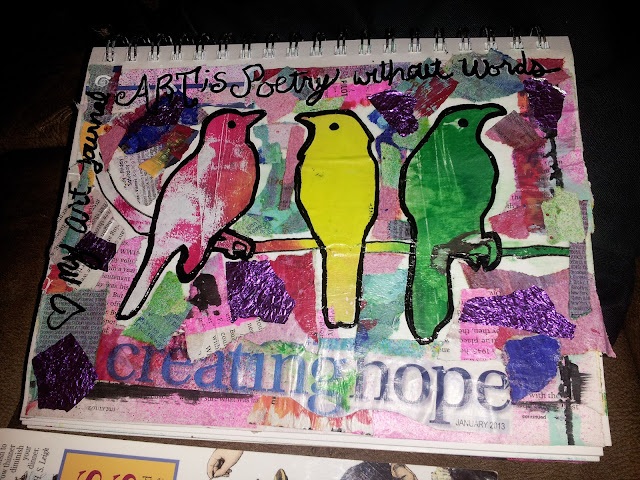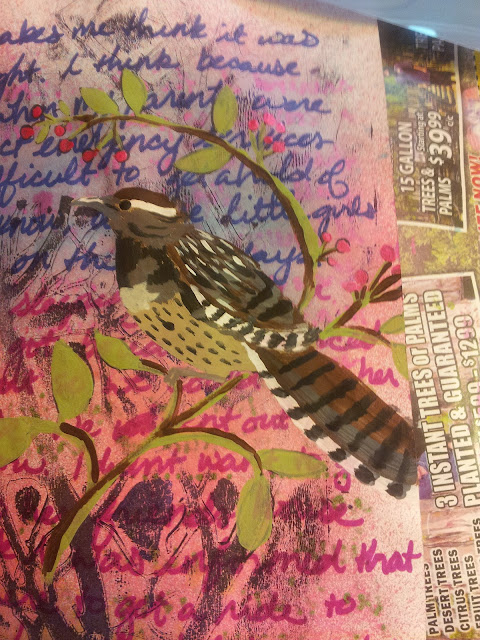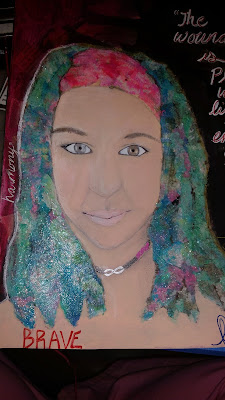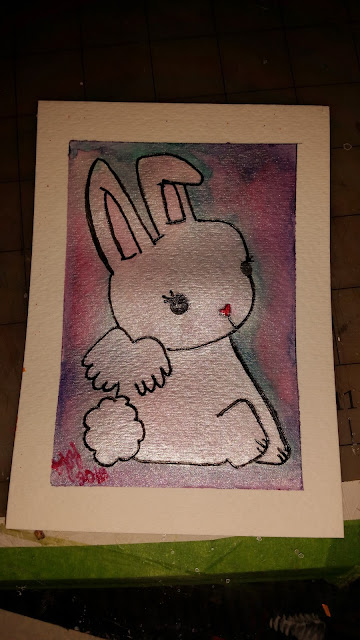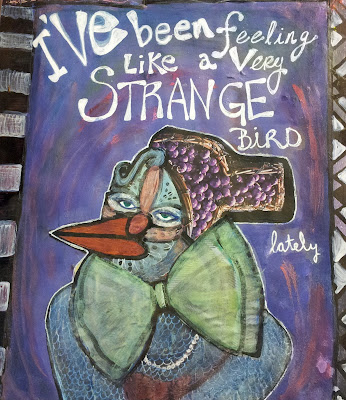 I have been
ruminating for weeks about all that the organization through which I was able
to train my service dog, Soldiers Best Friend, has done for me. In short, they
gave me my life back, but that’s only part of it, really. It has been difficult
for me to put into words. The words I did come up with are: trust, grateful,
companion, mentor, comradery, compassion, love, loyalty, determination,
friendship, pride, peace of mind, balance, work, oh crap, leave it, sit, stay
and thank you.
I have been
ruminating for weeks about all that the organization through which I was able
to train my service dog, Soldiers Best Friend, has done for me. In short, they
gave me my life back, but that’s only part of it, really. It has been difficult
for me to put into words. The words I did come up with are: trust, grateful,
companion, mentor, comradery, compassion, love, loyalty, determination,
friendship, pride, peace of mind, balance, work, oh crap, leave it, sit, stay
and thank you.
The things
that set this organization above all the others are numerous. First off, there
is no cost to the veteran seeking a service dog. Second, you may even be able
to train your existing pet to become certified. The dog has to be evaluated and
meet certain criteria, (i.e. age, temperament). Third is the quality and
compassion of the trainers and the staff. These volunteers are irreplaceable.
Whether it be one on one sessions, emails, texts or phone calls, these mentors
are true heroes. They really take training seriously and train at the teams' pace rather than a regimented schedule. Finally, the most important aspect of
training with this group is the fact that it’s a group! Veteran and dog teams
are able to meet once a week for group training. Not only does this socialize
the dog, but it gives each veteran the support of other veterans. Veterans who
are farther along in their training, and even teams that have already graduated
often attend group training to help out new teams or brush up on their skills.
This maintenance training is paramount in my opinion.
It is often
difficult for me to explain what it is that my dog does for me when asked in
public. I often resort to the most fundamental truth and tell people that my
dog is a psychiatric service dog and also helps me with certain tasks. But it
is so much more than that. My dog is sort of my security blanket, or to be more
specific, she is my armor against the world. She helps me to function and cope
with everyday life in a way that people outside the SBF world are unlikely to
ever understand. Nevertheless, I am confident in the knowledge that recognition
of how well dogs help PTSD survivors is just on the brink of public awareness.

PTSD
awareness and anything that can help military veterans is important to me. Not
only because I am a veteran with this condition, but because I am constantly
finding myself in a position as an advocate for it. And not because I want to
be, but because it seems against my principles to just let it go. Not many
people I encounter with my dog know that it is impolite to talk to or touch the
handler’s dog without permission.
Furthermore, the public is unaware that it is
rude to aim distracting noises at a service dog or even ask questions about the
owner’s disability. This aspect of having a service dog has been a bit
challenging for me. On the one hand, it sort of forces me into conversations
with complete strangers. On the other hand, I don’t always feel like talking to
anyone. A lot of what my dog helps me with is coping with people and crowds. I never
thought I could ever try and explain that to a perfect stranger when my journey
with my dog began, but now that I have had her for a few years I couldn’t even
tell you how often I do this.
As an
advocate, artist and handler, I feel it is my duty to bring awareness to the
public about the different types of service dogs and what they do. The publics’
opinion in the differences between a service dog and a therapy dog, for
instance, is pretty ambiguous in my opinion. Rules for service dogs in public and
guidelines for interacting with people with service dogs needs to be more
widespread.
According to
the ADA, “a service animal
is defined as a dog that has been individually trained to do work or perform
tasks for an individual with a disability. The task(s) performed by the
dog must be directly related to the person's disability.”
“Emotional
support dogs, therapy, comfort, or companion animals are not considered service
animals under the ADA.” (ADA,
2016)
An Emotional Support Animal (ESA) is an animal that, by its very
presence, lessens the emotional or psychological symptoms associated with a
handler's condition. The dog does NOT need to be trained to perform a
disability-specific task. All domesticated animals may serve as an ESA. The
only legal protections an Emotional Support Animal has are
1) to fly with their emotionally
or psychologically disabled handler in the cabin of an aircraft and
2) to qualify for no-pet housing.
 No other public or private
entity (motels, restaurants, stores, etc.) is required to allow your ESA to
accompany you and in all other instances, your ESA has no more rights than a
pet.
No other public or private
entity (motels, restaurants, stores, etc.) is required to allow your ESA to
accompany you and in all other instances, your ESA has no more rights than a
pet.
You'll
also need to be prepared to present a letter to airlines and property managers
from a licensed mental health professional stating that you are emotionally
disabled and that he/she prescribes for you an emotional support animal.
A
final note: Some animals are innately able to predict the onset of a physical
or psychiatric event or crisis, effectively enabling the handler to prevent or
minimize the event. This is an ability that usually cannot be trained - some
animals are simply born with the ability to sense the onset of the event. These
types of animals, although not otherwise task-trained, are considered
"working" service animals.
I have often
imagined how wonderful it would be if SBF and the VA were able to get behind me
on this effort. I would think it even more amazing if my efforts and advocacy
got some of the requirements for service dogs to change a little bit. I would
love to have some input from other veterans, trainers and people who work with
service animals regularly. My hope is to one day see posters about service dogs & ESA's in veterinary
clinic waiting rooms, hospital hallways, Vet centers and pet stores.
The reason I
would like to change the prevailing laws is because currently they are so vague that by
trying to protect the handler’s privacy they actually inhibit their ability to
be in public with their dog peacefully and fully participate in everyday life.
Currently
the law states:
“In situations
where it is not obvious that the dog is a service animal, persons may ask only
two specific questions:
 (1) Is the dog a service animal
required because of a disability?
(1) Is the dog a service animal
required because of a disability?
(2) What work or task has the dog
been trained to perform?
People are not allowed to request
any documentation for the dog, require that the dog demonstrate its task, or
inquire about the nature of the person's disability.” (ADA, 2016)
I will get back to
why I would like to change the laws a little later. In my experience, at the VA
and other public places these rules have not been helpful for me. With a PTSD
dog it is not obvious to the public what my dog does for me. Businesses and employees
who are not versed often tell me that my dog is not allowed on the premises.
They are often rude and completely ignorant of the laws surrounding service
dogs. In the beginning, I did not know how to handle this situation and was
incensed. Though I would try and explain the rules to them, I would often times
just leave. There was one incident however that I will never forget. This is my
VA Service dog horror story.

I had gone to the Phoenix VA to request a refill on some
medications because I was going out of town. Because I was a walk-in I was not
able to see my regular psychologist. I
waited about an hour and a half and was finally called upon. As I began to walk
down the hall with the doctor she stopped and cornered me and angrily accused
me of having a fake service dog. She cited the rules to me incorrectly and
demanded that my dog demonstrate her tasks, stating that she did not need to
ask about my disabilities because she had read my chart. She was yelling at me.
My dog, who had started out leaning into me, began to prance back and forth
between the doctor and me. My dog finally ended up jumping up on me, nuzzling
and licking me. She was performing one of her tasks but the doctor was
completely oblivious. The doctor continued to yell, saying things like, “This
dog isn’t trained. Service dogs don’t act like this!” I couldn’t speak at this
point. I was having a full-blown panic attack. I cowered. I sank down in a corner,
hugged my dog and cried. This infuriated the lady even more. She yelled at me
to get up. I couldn’t move.
She stood over me
with her hands her hips for a minute then walked over to reception and
continued yelling. I got up and wiped at my face. My dog leaned against me. The
lady walked back over to me and pointed to the door. She said, “I can’t help
you. You’re going to have to wait for the next doctor.” I went back to the
waiting room and cried for the next 45 minutes as I waited. The lady went back
to reception and very loudly (so the packed waiting room could hear every word)
pointed at me while continuing to rant and rave. It felt like everyone stared
at me. There was one guy that tried to cheer me up but I was too in shock to
respond with more than a weak smile. Everyone left me alone after that. The
next doctor helped me without incident. I got my meds and was on my way.
A few weeks later I went back and filed a complaint with the
patient advocate. If anything ever came of that complaint I am unaware. I even
went back to inquire about it because my psychologist was at that clinic and I
continued to run into this lady. I eventually just changed clinics so I didn’t
have to see her anymore.
 In order to move past
this event, when I got my new business cards, I put the above cited text on the flip side along with the website containing the full set of rules and
regulations regarding service dogs.
In order to move past
this event, when I got my new business cards, I put the above cited text on the flip side along with the website containing the full set of rules and
regulations regarding service dogs.
Incidents like this
are obviously the extreme. The more common things that I deal with when I go
out are people trying to interact with my dog without permission.
While it is currently not required by law for service dogs to wear a
harness, it is extremely helpful for me in my situation where it may not be
obvious to the public that she is a service animal. Many people still believe
that ‘real’ service dogs cost thousands of dollars and can only be certain
breeds. This is just not the case. The only thing a service dog truly requires
is a compatible temperament to their handler hand specialized training to
perform tasks. Breed really has nothing to do with it. I have seen Pit bulls,
Schnauzers, Pugs, Chihuahuas, Great Danes, Shepherds, Labs etc. in my program,
as well as many, many mutts. My dog is a mutt and she is perfect for me. This, effectively saves two lives at once, the life of the potential shelter dog and that of the veteran.
My concern with
regard to the current laws comes down to this. Right now, anyone with a dog can
buy a vest online, put it on their dog and say that it is a service dog. The
ADA does not require that service animals require any form of documentation,
such as proof that the animal has been specially trained or licensed. Dogs are
also not required to wear identifying harnesses or vests in public. Currently
the only real requirements for service dogs are the same for all dogs, i.e.
licensing, vaccination, registration and leash laws (depending on the municipality). This
is the main problem for me that I would like to see change. In my opinion, all working dogs should be required to wear identifying harnesses (This includes Medical Service dogs, Emotional Support dogs and Companion dogs- except for very
special circumstances where they might cause some obstruction to the handler),
they should be required to pass Canine Good Citizen requirements at the very
least, they should be required to pass a Public Access test, their handler
should be required to keep a license (similar to a driver’s license) on them at
all times and they should be retested every two to four years.
 When dogs are not
tested and certified by someone other than its handler, who is to say that the
dog is going to perform well as a service dog? If the dog has not been properly
socialized, and experienced with uncommon conditions like other animals, small
children, elevators, loud noises, going through security, etc. regardless of
how well it performs its tasks, that dog becomes a public safety issue. My
biggest problem has been with other service dogs who have not been properly
socialized or taught to ignore other service dogs. This is my number one stressor.
When other dogs show too much interest or aggression toward my dog, it prevents
my dog from doing her job. Just like humans need to ask permission to interact
with my dog, handlers of dogs need to request permission before letting their
dog interact with mine.
When dogs are not
tested and certified by someone other than its handler, who is to say that the
dog is going to perform well as a service dog? If the dog has not been properly
socialized, and experienced with uncommon conditions like other animals, small
children, elevators, loud noises, going through security, etc. regardless of
how well it performs its tasks, that dog becomes a public safety issue. My
biggest problem has been with other service dogs who have not been properly
socialized or taught to ignore other service dogs. This is my number one stressor.
When other dogs show too much interest or aggression toward my dog, it prevents
my dog from doing her job. Just like humans need to ask permission to interact
with my dog, handlers of dogs need to request permission before letting their
dog interact with mine.
By requiring service
dogs be certified, this should also mean that the handler is up to date with
the current laws. I have found this is not the case in most circumstances when the other handler has not been trained by a reputable group. The
handler might be up to date on some of the laws but doesn’t understand
exceptions and exclusions. Service dogs don’t have all access passes to go
wherever their handler goes. Also, many of the self-trained handlers I have
encountered do not understand what it means to keep their animal under control.
Currently, according
to the ADA:
“The
ADA requires that service animals be under the control of the handler at all
times. In most instances, the handler will be the individual
with a disability or a third party who accompanies the individual with a
disability. In the school (K-12) context and in similar settings, the school or
similar entity may need to provide some assistance to enable a particular
student to handle his or her service animal. The service animal
must be harnessed, leashed, or tethered while in public places unless these
devices interfere with the service animal's work or the person's disability
prevents use of these devices. In that case, the person must
use voice, signal, or other effective means to maintain control of the animal.
For example, a person who uses a wheelchair may use a long, retractable leash
to allow her service animal to pick up or retrieve items. She may not allow the
dog to wander away from her and must maintain control of the dog, even if it is
retrieving an item at a distance from her. Or, a returning veteran who has PTSD
and has great difficulty entering unfamiliar spaces may have a dog that is
trained to enter a space, check to see that no threats are there, and come back
and signal that it is safe to enter. The dog must be off leash to do its job,
but may be leashed at other times. Under control also
means that a service animal should not be allowed to bark repeatedly
in a lecture hall, theater, library, or other quiet place. However, if a dog
barks just once, or barks because someone has provoked it, this would not mean
that the dog is out of control.” (ADA, 2016)
When
my dog went through training with the organization Soldier’s Best Friend, I
went through training too. It was quite an education (& I trained working
dogs for the military)! More importantly, it really helped to bond my dog and
I. I was also able to learn from the teams that had more experience. I was
required to attend individual training sessions once a week as well as group
training sessions once a week. Only the dogs who had passed their CGC could
attend group.
Canine Good Citizen Requirements:
·
TEST 1: ACCEPTING A FRIENDLY STRANGER
·
TEST 2: SITTING POLITELY FOR PETTING
·
TEST 3: APPEARANCE AND GROOMING
·
TEST 4: OUT FOR A WALK (WALKING ON A LOOSE LEAD)
·
TEST 5: WALKING THROUGH A CROWD
·
TEST 6: SIT AND DOWN ON COMMAND AND STAYING IN PLACE
·
TEST 7: COMING WHEN CALLED
·
TEST 8: REACTION TO ANOTHER DOG
·
TEST 9: REACTION TO DISTRACTION
·
TEST 10: SUPERVISED SEPARATION (AKC, 2016)
It really
comes down to this: Whether you are calling your dog a Service Dog, Emotional
Support dog or Companion Dog. Both the dog and
their handler need to have manners and boundaries when it comes to going out in
public. Be respectful to other people. Be aware that
veterans, often times have larger boundaries and are more sensitive to noise,
light, people and other distractions in the public world. Also be aware that
not all people are fond of dogs. Some people have a fear of dogs and some just
don’t care for them.
If you are a
veteran or a family member of a veteran who might benefit from the help of a
service dog, I suggest you research service dog organizations in your
area. Recognition of how well dogs are able to help PTSD survivors is just on
the periphery of public awareness and small groups are popping up all over the
United States.

If you are in Arizona and a veteran and would like to know more about getting a service dog through soldiers best friend please check out their webpage.
http://www.soldiersbestfriend.org
Soldier's Best Friend
Ph: 623.218.6486
admin@soldiersbestfriend.org
*Disclaimer* Soldier’s Best Friend did not ask me to write this for them.
If you are interesting in learning more about service dogs nationwide along with veterans like myself and their stories, please check out the incredible art of Paul Sansale.
www.RescuedHeroesFoundation.org
Below is a list of Service Dog organizations in Arizona:
Power Paws Assistance Dogs
Ph:480-970-1322
All Ways Pawsitive Pet Behavior & Training
Ph:480-529-7947
Handi-Dogs, Inc.
Ph:520-326-3412
Foundation for Service Dog Support
Leashes for Living
Ph: 623-393-8481
The American Service Animal Society:
Ph: 480-802-9339
To adopt a dog in the Phoenix, Arizona area:
(This is where I found my sweet girl. One day she was on the euthanasia list and the next she was saving my life learning how to be the most amazing, super service dog ever.)
Or you can see where Soldier's Best Friend gets some of their dogs:
Or you can try the oldest & largest No Kill Shelter in Arizona:

Always spay or neuter your pets to prevent over population and senseless deaths.
#servicedog #ptsddog#esa #therapydog #emotionalsupportdog #companiondog #dog #shelterdog #puppy #workingdog #assistancedog #PTSD
References
ADA. (2016).
Frequently Asked Questions about Service Animals and the ADA.
Retrieved from ADA.gov: http://www.ada.gov/regs2010/service_animal_qa.html
AKC. (2016). CANINE
GOOD CITIZEN® TRAINING & TESTING. Retrieved from American Kennel
Club: http://www.akc.org/dog-owners/training/canine-good-citizen/training-testing/


























